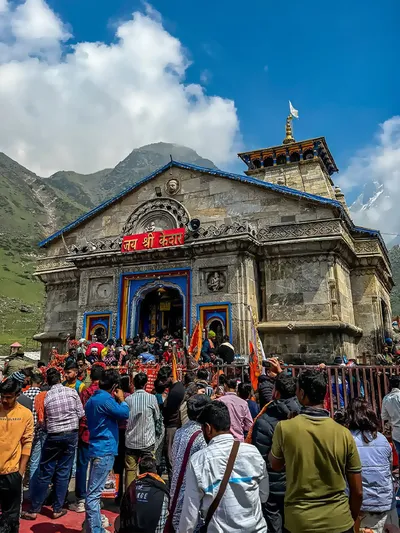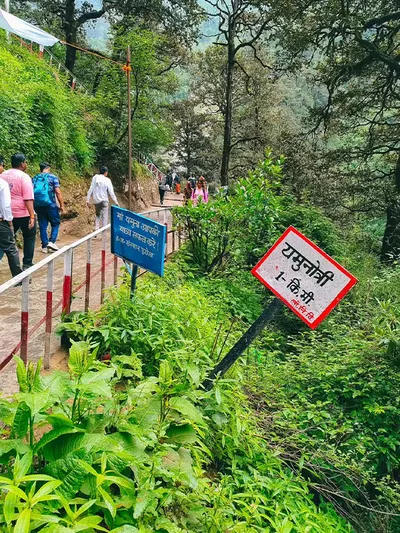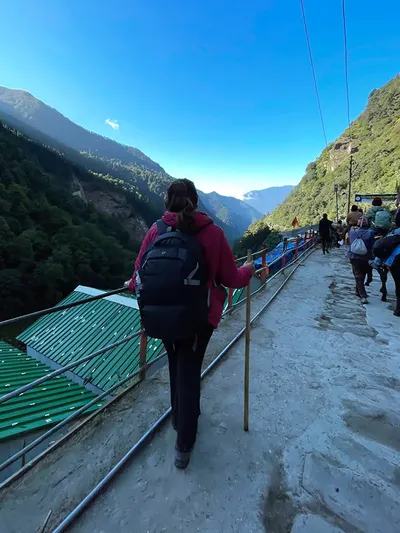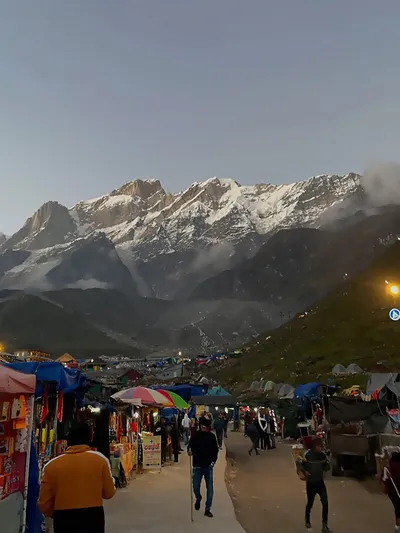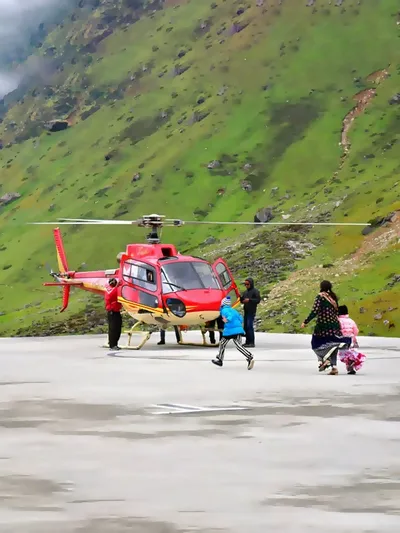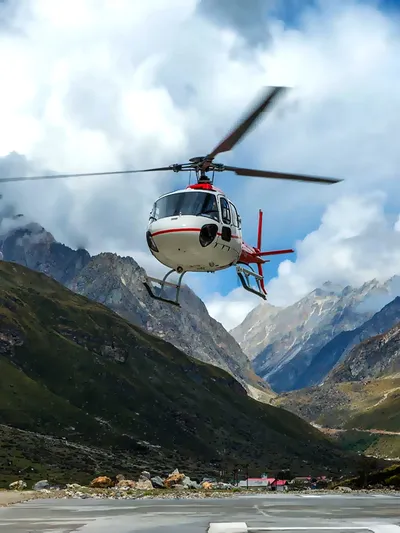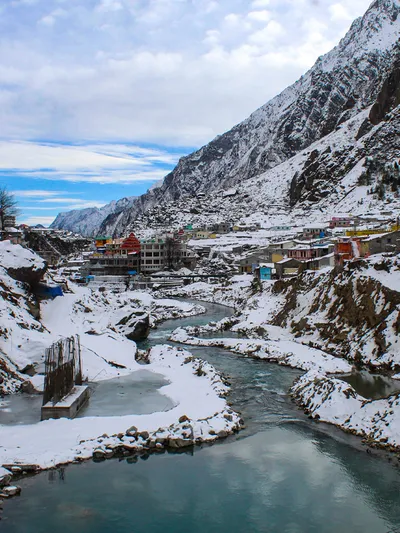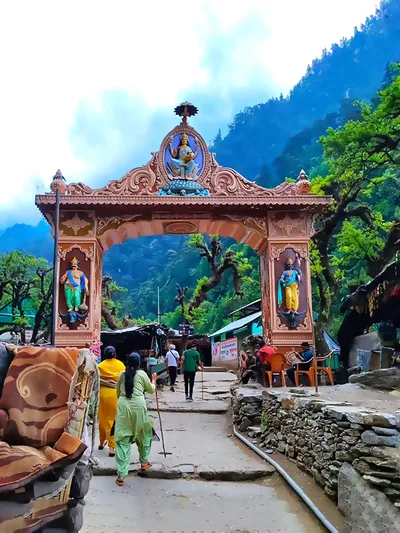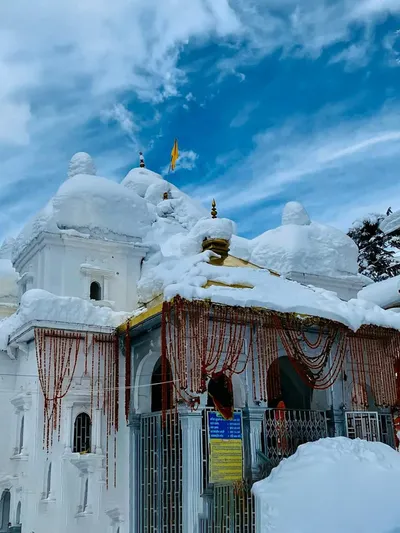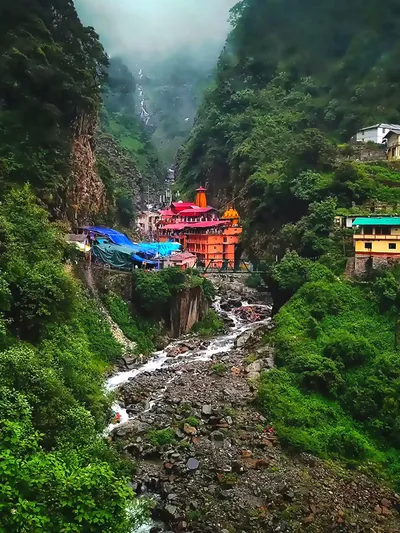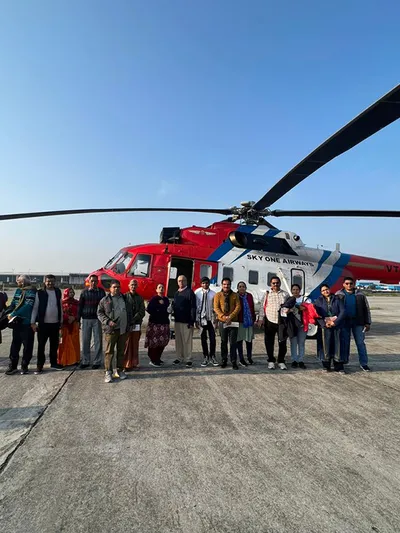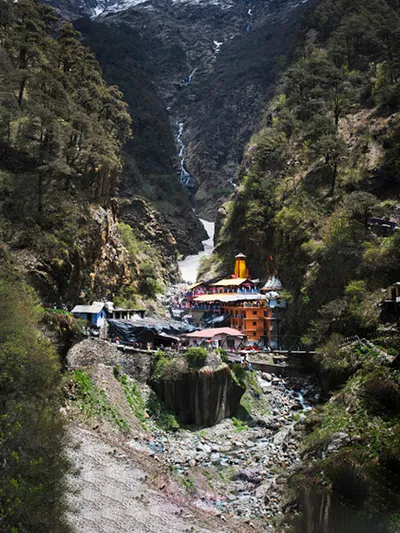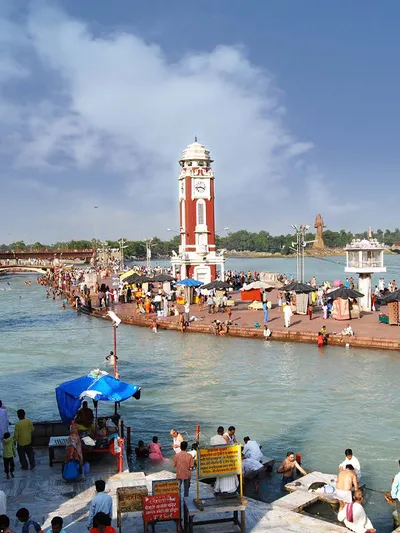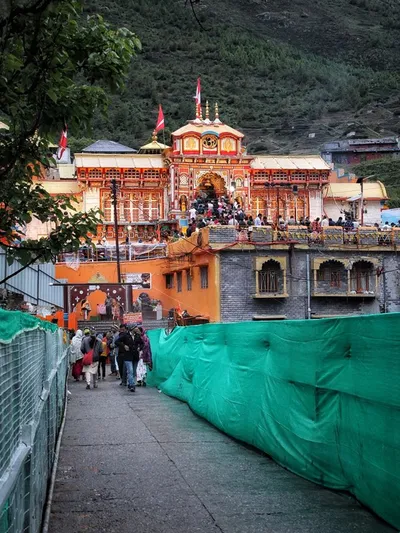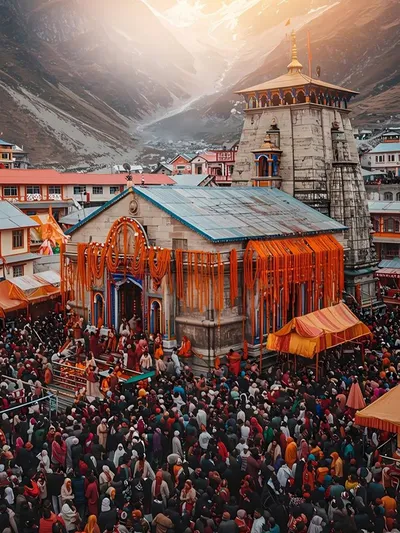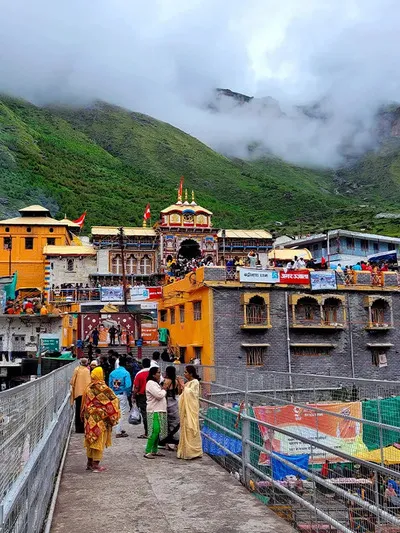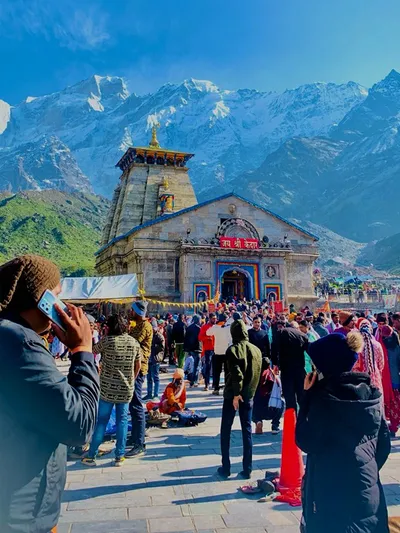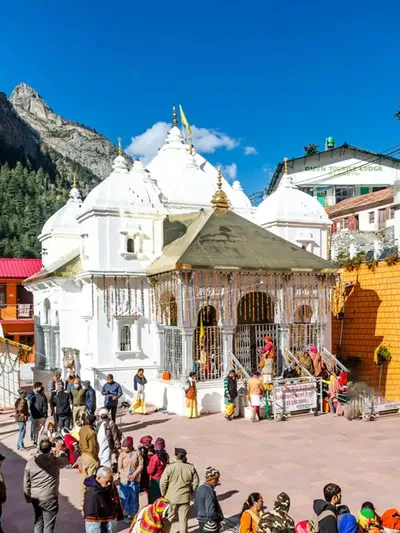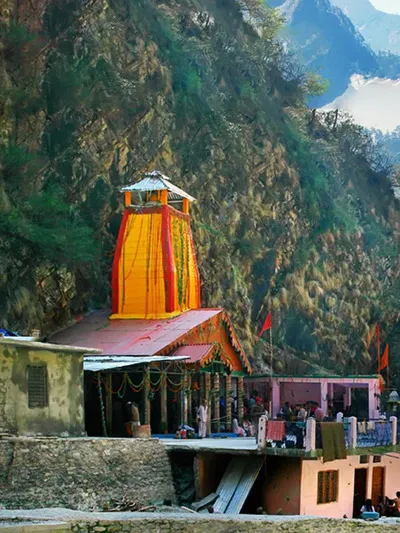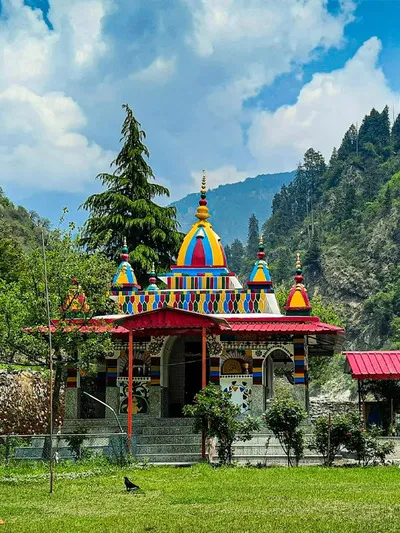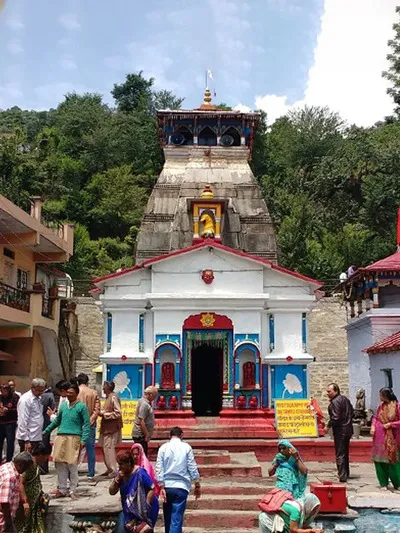Mana – The First Village of India

Mana is often known as the first village of India. This small and peaceful village is close to the famous Badrinath temple. Many local people earn some money from tourists and pilgrims who visit. It isn’t just a small village near the Indo-Tibetan border. It also has a famous history, amazing natural views, and many special things that make it different from other places. Before you visit, here’s what you should know to enjoy your time in Mana Village.
About Mana Village
The people living in Mana village play an important role in the rituals of Badrinath Dham Just before the temple shuts for the cold months, the villagers participate in a special tradition. They offer a shawl made by the girls of the village to Badrinarayan. Many people in Mana don't live in one place all year. They move from one place to another depending on the season, this is called a semi-nomadic life. They belong to a group of people known as the Bhotia tribe. A long time ago, they used to do business (buying and selling things) between India and Tibet.
Quick Information
- Location: Chamoli, Garhwal, Uttarakhand
- Distance: 4 km from Badrinath
- Height: 3,200 m
- Nearest railway station: Rishikesh Railway Station
- Nearest airport: Jolly Grant Airport
Where Does the Name “Mana” Come From?
People say the name “Mana” comes from its old name, “Manibhadra Ashram”. The village’s guardian god, Manibhadra, is used to live at Keshav Prayag, the place where the Alaknanda and Saraswati rivers meet near the village.
History of Mana Village
- Pandavas in Mana: The history of Mana Village is connected to the Mahabharata. Locals believe the Pandavas walked through this place on their last journey to heaven, called Swargarohini.
- Bheem Pul: Visitors can see a stone over the Saraswati River. It is believed that Bhima made it so Draupadi could cross the river safely.
- Vyasa Cave: This is the cave where the Mahabharata was written. Ved Vyas told the story without stopping, and Ganesha wrote it down, but only when he understood every word.
- The Hidden Saraswati River: You can see the Saraswati River for a little while. Then it goes underground because people believe Vyas cursed it to stay hidden.
- Sacred Land: Mana is not just a village near the border, it’s a place full of history, natural beauty, and culture.
Places to Visit in Mana Village
Saraswati River
In Mana Village, the Saraswati River flows very fast for a short time and then goes underground. People here believe the Saraswati River is a form of Goddess Saraswati, who is known as the goddess of wisdom and knowledge.
Vyas Gufa, Ganesh Gufa
Vyas Gufa is a holy place where people believe the great sage wrote the Puranas. There is also a temple of Maharishi Vyas here that is nearly 5,000 years old. A lot of people visit this place to enjoy its peaceful atmosphere and spiritual vibe. Apart from this, while in Mana village, try the simple and delicious combo of warm tea and Maggi, it’s the locals’ favorite.
Bhim Pul
In Mana Village, there is a natural stone bridge over the Saraswati River. People say Bhim, the strongest Pandava brother, put the big rock there to help Draupadi cross safely.
Handcrafts of the Village
The women in the village are talented in making handmade items. While you're here, don’t miss the chance to shop a little. You’ll find beautifully made carpets, shawls, sweaters, mufflers, scarves, and caps at reasonable prices directly from the women who make them.
Treks to Try from Mana Village
The Trek to Vasudhara Falls
One interesting place to visit near Mana village is Vasudhara Falls. People say that the water of this waterfall does not fall on anyone who has done bad things, which makes the place special. The peaceful atmosphere and the stunning mountains make this trek unforgettable.
The Trek to Satopanth Lake
The trek to the holy Satopanth Lake starts from Mana village. It is believed that Mahesh, Brahma, and Vishnu bathe in its pure waters. The trek goes through amazing Himalayan views and passes Sahastradhara Falls.
The Trek to Charanpaduka
The Charanpaduka trek takes you to a big rock where it’s believed Lord Vishnu left his footprints. You can see stunning views of Narayan and Neelkanth peaks from the spot.
Best Time to Visit
The summer months of May-June and post-monsoon months of September-October are the best time to visit Mana. Winters are too cold and even Badrinath Dham is closed during that time.
Weather
From November to April, it gets cold, with temperatures dropping below zero. In summer, the weather is pleasant, around 15 to 20 °C, and the village looks truly beautiful.
How to Reach Mana Village
By Road
You can reach this village by trekking from Badrinath, which is around 3 to 4 km away. The village is connected by a national highway, making it accessible from Haridwar, Meerut and Delhi.
By Rail
The closest railway station is in Haridwar, about 275 km away from the village. From there, you can take a bus or a taxi to reach Mana.
By Air
The closest airport is Jolly Grant in Dehradun, around 319 km from Mana. You can also take a helicopter from Dehradun’s Sahastradhara Helipad to Badrinath.
How Far Is Mana Village from Major Cities and States
- From Delhi: Approximately 520 km
- From Dehradun (nearest airport): About 319 km
- From Rishikesh (nearest railway station): Around 290 km
- From Himachal Pradesh: Approximately 380 km
- From Uttar Pradesh: Around 551 km
Frequently Asked Questions
Q-1: What are the top places to see in Mana village?Ans: Neelkanth Peak, Tapt Kund, Mata Murti Temple, Vasudhara Falls, Vyasa Gufa, Ganesh Gufa, and Bheem Pul.
Q-2: What’s the easiest way to get to Mana village?Ans: By road using NH-58. The 4 km trip from Badrinath can be done by shared or private taxi.
Q-3: Which wildlife can I see while visiting Mana?Ans: Himalayan Monal, musk deer, Himalayan Tahr, black bears, and many kinds of birds.
Q-4: Are there any permits required to visit Mana?Ans: You don’t need any special permits to visit Mana.
Conclusion
Mana Village isn’t just the last village of India, it’s a calm and beautiful place with famous mythological stories and spiritual vibes. Whether you want to visit holy sites like Vyas Gufa and Bhim Pul or go on treks to Vasudhara Falls and Satopanth Lake, Mana has it all. You’ll enjoy the amazing views, fresh air, and local handmade things. Visit in summer, winters are too cold, and most people aren’t around. The village welcomes you kindly.
